Instacart Ads
How Consumers Shop on Instacart – Unique Consumer Behavior
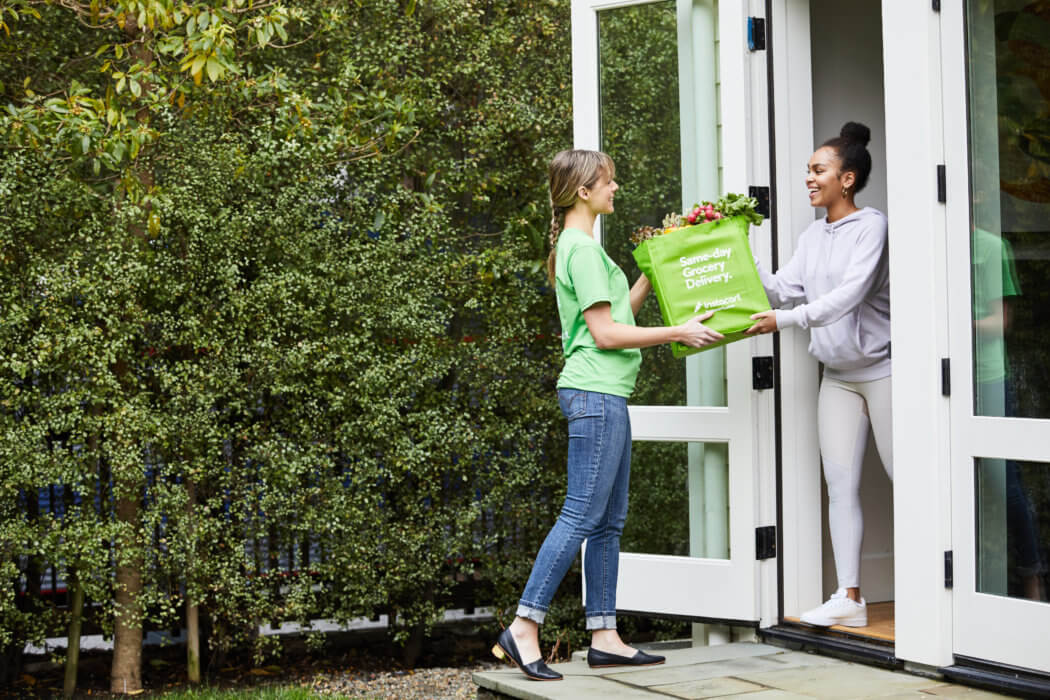
In this article we examine how consumers are shopping on Instacart, how this differs from other ecommerce habits, and what brands and advertisers need to know to succeed on the platform. We’ll share some measurements to illustrate the non-linear consumer journey before making recommendations that brands and advertisers can take today to better drive conversion on the Instacart marketplace.
Online grocery baskets are just as full
When consumers shop from their favorite grocery retailers on Instacart marketplace, they are replicating in person ‘shopping missions’. We can see this behavior by looking at the range of items in their carts.
The purpose of each online shopping mission varies; we see consumers building baskets that restock essentials and staples, buying groceries to feed the whole family, or grabbing ingredients for a specific recipe or event meal. But no matter the mission, a typical Instacart consumer buys multiple types of products from across the digital storefront; an average order includes items from 11 different categories and shows consumers replicating the in-store grocery shopping experience with an online one.
Instacart is unique among online shopping experiences
This full basket experience on Instacart differs from other ecommerce channels. Consumers come to Instacart with a general mission but may not know each specific item they’ll buy. Much like going in-person to their grocery retailer, when consumers go to that same retailer on Instacart marketplace their journey involves browsing, inspiration, and discovery in the digital aisles.
Consumers often use ecommerce channels to ‘spearfish’ or search for a specific product — maybe look at one or two comparable products — and check out. Typically, the whole shop takes a couple of minutes and is driven by searching a catalog of products that are not aligned with any retail store. But on Instacart, consumers create a shopping journey and add items to their cart over the course of the shop. They spend time browsing the digital aisles and departments, and review personalized suggestions from the ‘discovery surfaces’ on the Instacart app.
The time it takes consumers to receive their order is another notable difference between Instacart and other leading ecommerce platforms. Instacart’s same-day delivery and pickup services bring fresh groceries and everyday essentials to consumers in the U.S. and Canada in as fast as 30 minutes. This aligns with the growing consumer expectation for delivery times, with some consumers expecting deliveries in 30 minutes or less.
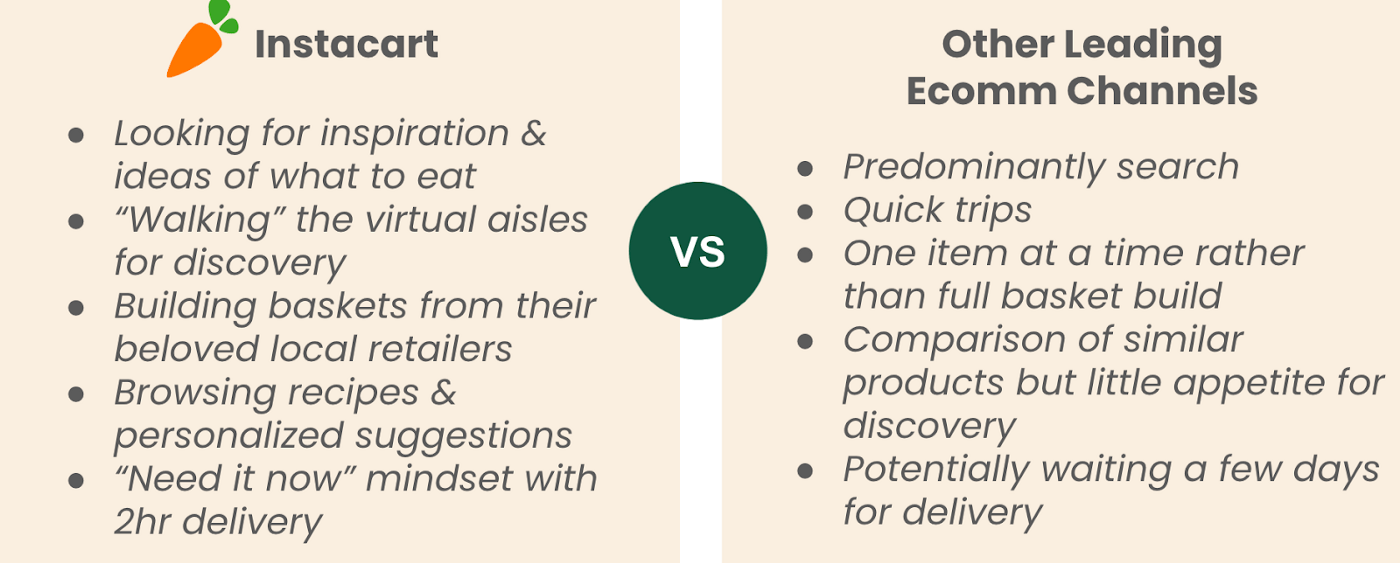
The Instacart shopping journey is non-linear
Instacart tracks the source or ‘path to cart’ for all items purchased through Instacart marketplace, differentiating between three main groups — items bought from search results, browsing departments, aisles, and other discovery areas of Instacart, or from a list of previous purchases, which we call ‘buy it again’.
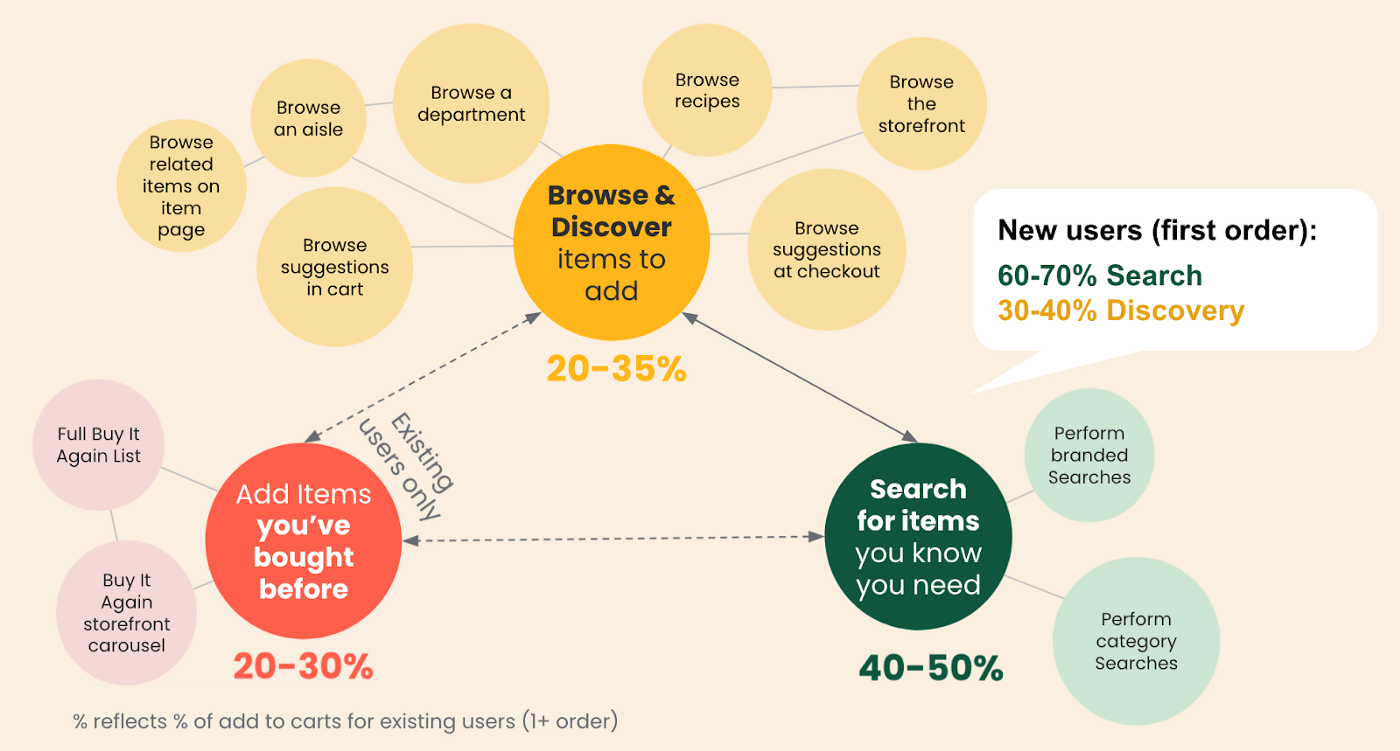
Of all the items purchased, roughly 40–50% come from search, 20–35% from browse and discover, and 20–30% from ‘buy it again’ lists.
On Instacart, the consumer journey is non-linear. At some point in the journey a consumer is likely to use search. Maybe they have a recipe in mind, a request from their kids for chips, or they know they’re out of pasta sauce. They’ll search for these items and, more often than not, select one of the first few items displayed on the search results. These searches can be broad like ‘pasta sauce’ or they can be for specific brands, like when they’re buying their favorite cereal.
But what the data shows is that the journey does not start and end with search. Consumers are also browsing their favorite grocery retailer virtually through Instacart marketplace for inspiration and discovery. Just like they walk up and down the aisles when they go in-person, consumers usually take a ‘what sounds good’ approach for some of the items they buy. In these moments, consumers are looking for something to catch their eye without explicitly stating what they’re after.
This is great news for our brand partners. Our advertising products provide options that can put their products in front of consumers on every ‘discovery surface’ on the platform to catch their eye when they are in this mode. Plus, our data shows that the majority of add to carts from these discovery surfaces are the first time the consumer has added that item to their cart — meaning it’s a great place for brands to acquire new customers.
The last step on the non-linear consumer journey is the ‘buy it again’ lists where consumers are shown a list of products that they have bought on previous orders. These can act as reminders of meals or recipes they’ve made before and items they tend to stock up on.
Our brand partners can leverage Instacart Ads products to appear on ‘buy it again’ lists so they stay top of mind with their customers and aid in retaining valuable customers.
What this means for brands advertising on Instacart
When it comes to online grocery, brands need to think about reaching consumers during all stages of their nonlinear shopping journey. With 50–60% of the items bought on Instacart coming from a combination of browse, discovery, and ‘buy it again’ lists, the most effective ad strategies aim to win the full consumer journey, not just initial search.
Most Recent in Instacart Ads

Instacart Ads
Fire & Smoke Society Spices Up Sales with Instacart Ads
Fire & Smoke Society, the makers of spices, rubs, seasoning, and sauces with playful names like ‘Potato Slayer’ and ‘Mayor Of Rub Town’ got their start back in 2018. Originally, the spices and seasonings were…...
Apr 17, 2024
Instacart Ads
Instacart Launches Target ROAS and New Acquisition Objective
New functionality brings increased control and efficiencies to reach new audiences At Instacart, we use an objective-based framework to organize our ad formats for advertisers creating new ad campaigns. Because our different ad formats are…...
Apr 16, 2024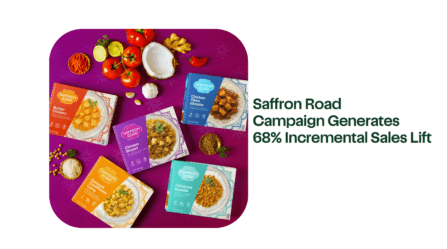
Instacart Ads
Saffron Road Campaign Generates 68% Incremental Sales Lift
Saffron Road is America’s largest brand in “Better for You” animal protein-based frozen dinners. They deliver clean-label, high-quality, and ethically sourced products that respect cultural traditions from around the world. Saffron Road was an early…...
Apr 9, 2024

 How Consumers Shop on Instacart – Unique Consumer Behavior
How Consumers Shop on Instacart – Unique Consumer Behavior 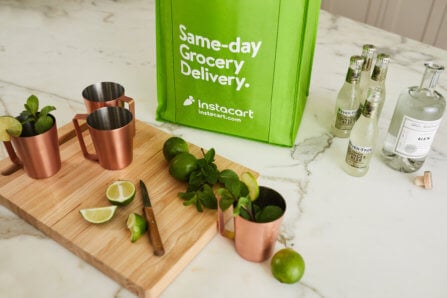 Advertising on Instacart 101: Where Do My Ads Show?
Advertising on Instacart 101: Where Do My Ads Show? 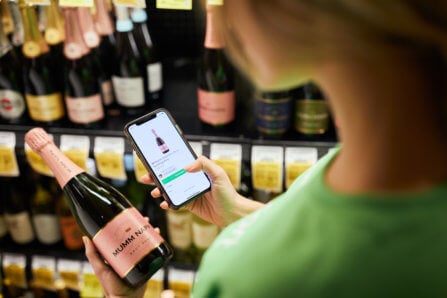 How Instacart Ads provides value today and in the cookieless future
How Instacart Ads provides value today and in the cookieless future 
